On the right we pass a waste-ground, where the complex of the most famous public baths in the city opened in 1896 by the famous Irkutsk homeowners N.P. Kurbatov and G.I. Rusanov and became the first such establishment where electricity was installed. For a long time Kurbatov Baths were one of the main resting places for Irkutsk residents.

Kurbatov’s Baths
On the next intersection on the right a monumental buildings attract attention – all this once belonged to the first yeast plant in a history of Siberia, the owner of which since 1882 was a J.M. Pertsel.
CESovskaya embankment street, named after the oldest city power plant that operated in this area of the city for almost a century since 1910. It ends next to unusual building in the Stalinist Empire style with a hemispherical end on the northern facade. Here once was the one of the most outstanding temples in Irkutsk – Church of Sts. Procopius and John of Ustyug. It had characteristic stylistic features that later became dominant in the cult architecture of the city and determined the identity of the local school. Had been built in 1767, it was destroyed in the 1930s.

Miracle-Workers Church
In the last years of the church existence, since 1932, a direction of tea-packing factory which produced a half of all tea in the USSR was placed here. Today nothing reminds of the temple or plant, as well as of the building of the oldest power station in Irkutsk. The building of the factory which was the only enterprise in the country that produced tea during the WWII, was demolished, and one of the city banks is located in the former warehouse building. Also it is planned to construct one of the new architectural landmarks of Irkutsk on the site of the old power plant.
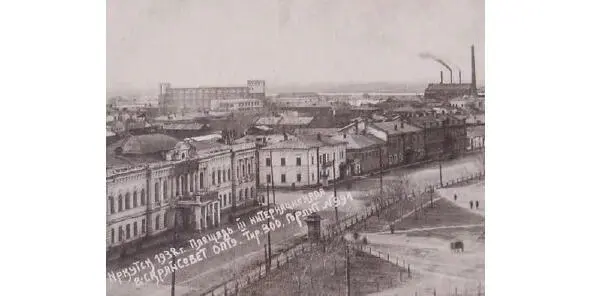
Tea-packing factory and CES
We move on and passing by “Lovers’ Square”, which is comfortably located right opposite one of the most beautiful wooden mansions in the city – this is the estate of the merchant and deputy of the Irkutsk City Duma I. I. Ogladin.
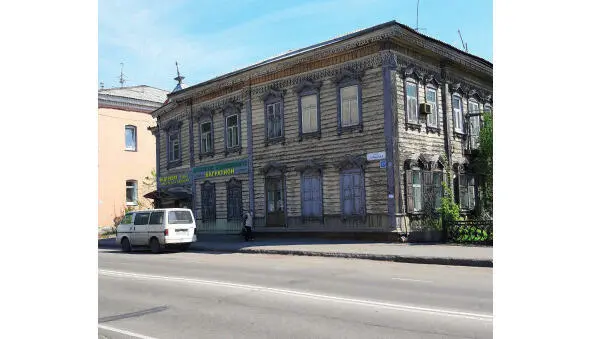
House of I. I. Ogladin
Immediately after it there is an interesting stone building, where from March 13, 1807 and until April 19, 1868 was the main Siberian office of the Russian-American Company, as evidenced by the memorable plate on the wall. Irkutsk, due to its favorable location, was once the center of Russian America or the American district of the Irkutsk Goberny with the center in Novo-Arkhangelsk on Alaska (nowdays Sitka, USA).

Map of Russian America
And now the “snow-white frigate” appears ahead – the beautiful Savior Church, which marks the exact place where the city of Irkutsk was founded. Let’s take a closer look at it, because this is the only building that has survived since the time of the wooden fortress, which was established on this place on July 16, 1661. Today from this date we count the official date of the foundation of Irkutsk, despite the fact that the city was founded on the site of an aboriginal settlements earlier (in 1620 and 1652). In the past, at the mouth of Irkut River, which flows here into the Angara, there was already a Russian winter hut for collecting “yasak” (tax with the furs of wild animals).
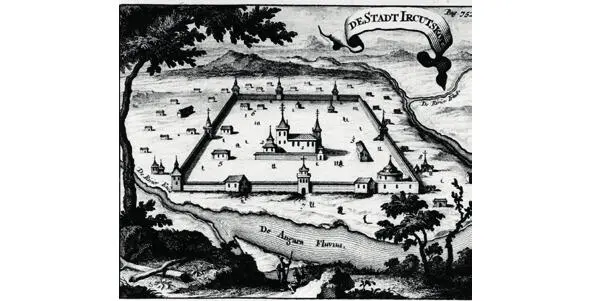
Irkutsk fortress in 1692
Church in the Name of the Savior
Let’s get meet the Church in the name of the Savior Image Not Made by Hands (Mandylion). Here once was kept that religious banner, which as a standards was brought to Siberia by Cossacks-pioneers. The temple was created by the Moscow architect M.I. Dolgikh, who not only built the building in the canons of the old Russian style, but also gave it a special local flavor.
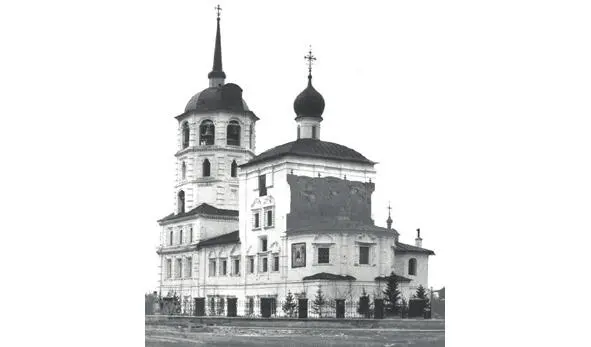
Church of the Savior
Initially, the church was built right into the wall of a wooden fortress and on the first floor there was a warehouse for the state treasury, so people entered the temple which was located on the second tier through a wooden promenade-gallery. There is still reminiscent of that with the triangular ornaments between the first and second floors, where the balks were inserted, and on the second tier there are doors which leading to nowhere. On the south side of the temple on the second floor, you can still see in the window bars the date when the church got a bell tower (“1760”) so that was a time when the temple acquired a modern face.
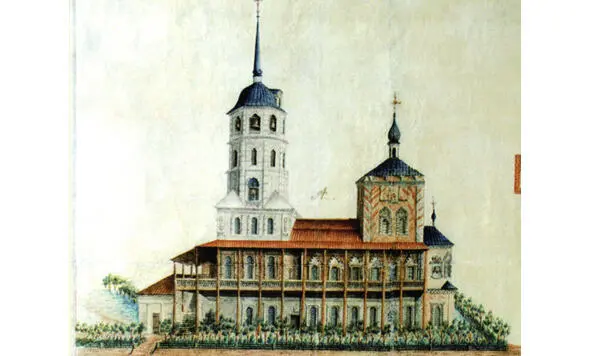
Promenade of the Savior Church
Moreover, in 1824 the Church of the Savior was painted by an artel of Moscow icon painters and until the end of the 20th century it remained the only painted church in entire Siberia. It was not customary to paint temples in the local climate because of the sudden changes in temperature that ruined any paint. The frescoes amazingly preserved thanks to the fact that in Soviet times they were covered with four layers of plaster and under this protective cap they spent almost half a century.
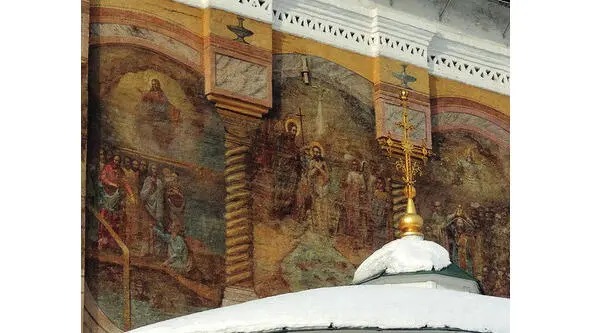
Frescoes on the church
In the murals, from left to right you can see scenes of christening the local Buryat population, the image of Epiphany, as well as the rite of passage of the first bishop of Irkutsk and Nerchinsk known as St. Innocent Kulchitsky. In addition, on the southern wall of that temple you can also see the icon of the Savior Not Made by Hands, images of St. Nicholas and St. Mitrofan of Voronezh.
Surprisingly, Orthodox churches adjoin a monument to the “flaming Gothic” a operating Catholic church in the name of the Assumption of the Blessed Virgin, which was built on this site in 1883 by the project of I.J. Tamulevich mainly for the descendants of exiled Poles at least 20 thousand of which passed through Irkutsk during 19th century. The names of many of them today are in the denotation of streets, mountain ranges and various types of plants and animals (Dybowski, Cherski, Chekanovski, Godlevski and many others).
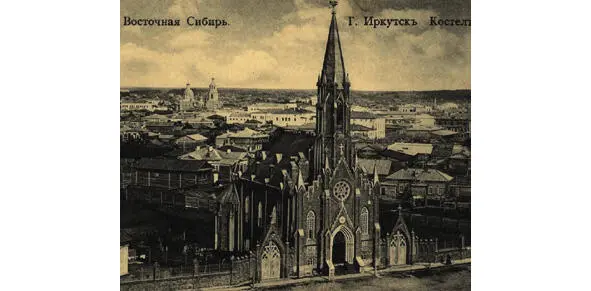
Polish Catholic church
The temple was consecrated personally by the “Apostle of Siberia” Christopher Szwernicki, who was the first parish priest of the diocese of St. Joseph – largest geographical Catholic bishopric in the world (area of about 10 million km 2), the center of which is still here in Irkutsk.
Читать дальше






















